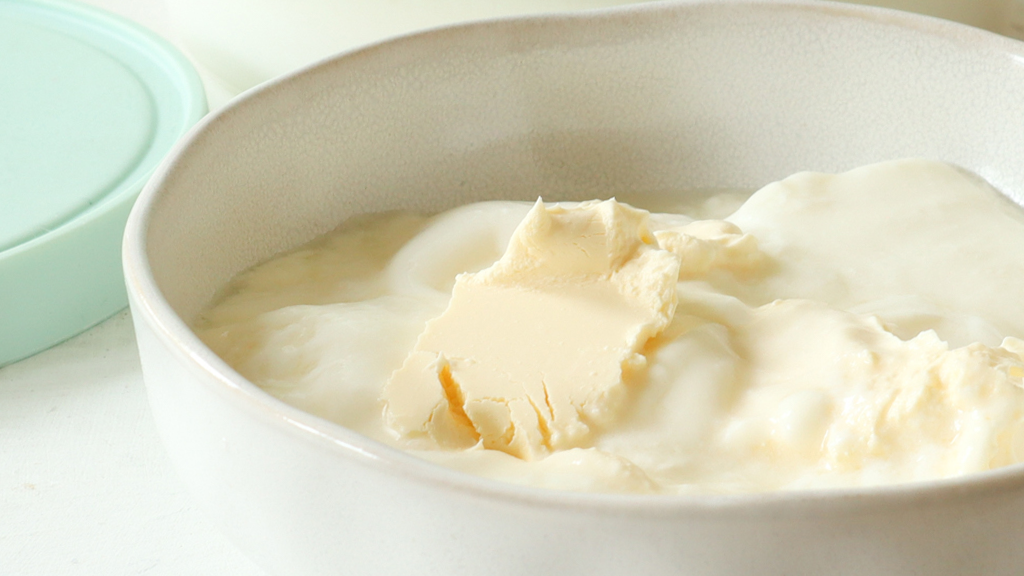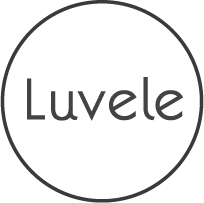Your Cart is Empty
Add description, images, menus and links to your mega menu
A column with no settings can be used as a spacer
Link to your collections, sales and even external links
Add up to five columns
Add description, images, menus and links to your mega menu
A column with no settings can be used as a spacer
Link to your collections, sales and even external links
Add up to five columns

How to make raw milk yogurt
Barb Hodgens
Barb Hodgens loves to cook with alternative, healthy whole food ingredients, with a focus on gut health. Barb has overcome her own gut health issues through healthy eating. Share your ideas, comments and photos at the end of this post :)

The most nutritious yogurt you can make!
Raw milk is milk that is straight from an animal and has not been pasteurised or homogenized. Without processing, raw milk naturally contains a higher nutrient content, full of unique beneficial bacteria, fatty acids, vitamins and minerals. Raw milk also contains enzymes which helps to break down lactose, making it easier to digest. When you make yogurt with raw milk the innate bacteria in the milk are preserved.
Raw milk is an attractive option for yogurt enthusiasts who want to super charge the benefits of homemade yogurt. After 24-hours in the Luvele Yogurt Maker, homemade raw milk yogurt becomes richer, with a more diverse range of probiotic bacteria and enzymes than yogurt made from pasteurised milk.
Sadly, there are currently many concerns around raw milk that scare people away from its numerous health promoting virtues. Despite all the health benefits, unless you are fortunate enough to have access to a local diary, raw milk can be difficult to find. In Australia, it is illegal to sell raw milk for human consumption. Fortunately, there are health food stores and farmers markets that sell it labelled as bath milk.

RAW MILK FOOD SAFETY
It’s essential to consider the risks and benefits of consuming raw milk. Read the following the guidelines before making homemade yogurt with raw milk.
KNOW THE SOURCE
Use high-quality raw milk from a reputable source and ensure the milk is fresh. Raw milk comes with its own native bacteria. Without pasteurisation bad bacteria can grow quickly. If your milk is a few days old, wasn't chilled quickly enough, or was transported in hot conditions, the milk may grow pathogens which can cause serious food borne illnesses.

NATIVE BACTERIA
Raw milk naturally contains a very wide variety of native bacteria. When you use it to make yogurt, those native strains mix and compete with the strains in your yogurt starter culture. To ensure healthy strains are always dominant, use a new sachet of starter culture each time you make yogurt, rather than preserve a portion of yogurt to inoculate your next.
DO NOT HEAT THE MILK
Raw milk is full of beneficial enzymes that will be destroyed if the milk is heated above 110° Fahrenheit (about 43° Celsius).
Traditional yogurt preparation heats the milk before whisking in the starter culture. Heating denatures the milk proteins which coagulates the milk cultures and helps create a thick scoopable texture.
When you make yogurt with raw milk, whisk the starter culture directly into the milk. Since the milk proteins remain in their natural state, the yogurt will have a thinner texture.

CONSISTENCY
Raw milk yogurt will not look like commercial yogurt or homemade cow’s milk yogurt that you may be accustomed to making. Homemade yogurt, made with raw milk has a delicate, thin, drinkable consistency, similar to milk kefir.
The natural bacteria and enzymes can affect the texture and flavour. Depending on what the cows ate that day, the texture of yogurt made from raw milk can vary from batch to batch.

FULL OF HEALTHY FAT
Because raw milk is unhomogenised, it will naturally separate into different layers of fat density. A thick layer of cream on top of your homemade raw milk yogurt is not guaranteed but it is common. It’s also delicious! Choose to mix it through or lift it off and use it as sour cream. Store the sour cream in a glass airtight container for 3 weeks.

HOW TO THICKEN RAW MILK YOGURT
If your homemade raw yogurt is too thin there are ways to thicken it up.
1. The most common way is to strain the yogurt through a cheese cloth for approximately 30-60 minutes to remove some of the whey. Follow the directions for straining yogurt in this homemade Greek yogurt recipe.
2. Gently heat the raw milk to 40° Celsius (approx. body temperature) and dissolve 1 level tablespoon of premium powdered gelatin. The step by step method is coming soon.

How to make raw milk yogurt
Luvele
Rated 5.0 stars by 1 users
Raw milk is straight from an animal and free from processing which means all the unique bacteria, enzymes, fatty acids, vitamins and minerals are left in to super charge your homemade yogurt.
Ingredients
- Raw milk
Yoghurt starter culture
Directions
PREPARATION
Before you begin it is important to sterilise the Luvele yogurt making glass jar, lid and any utensils you use, in hot water. The danger of not sterilising is that other bacteria may overpower your starter culture and affect the quality of your yogurt.
- Pour the milk straight into the yogurt making glass jar.
- Add the starter culture and whisk it in.
- Put the lid on the yogurt making jar and place into the yogurt maker.
- Pour water slowly into the base. The water must not be filled over the ‘tall line’ indicated on the inside wall of the maker. Place the cover lid on top. The milk is now ready to begin fermentation.
- Use the digital control panel to set the temperature to 38° C (100° F), the time to 24-hours and then press ‘confirm’ to begin incubation.
- After 24 hours the fermentation is complete. Condensation will have collected under the cover lid during fermentation. Please take care removing it and allow the water to drip into the water bath, instead of your bench.
- Switch the yogurt maker off and remove the yogurt jar. Straight from the maker the yogurt will be runny and warm. There will be a layer of yellow cream on top of the yogurt. Be gentle with the warm yogurt and don’t stir it or else it won’t set in a perfect white mass.
- Place the yogurt in the fridge for at least 6 hours to set.
Recipe Video


PIN THIS RECIPE


How to make raw milk yogurt

The most nutritious yogurt you can make!
Raw milk is milk that is straight from an animal and has not been pasteurised or homogenized. Without processing, raw milk naturally contains a higher nutrient content, full of unique beneficial bacteria, fatty acids, vitamins and minerals. Raw milk also contains enzymes which helps to break down lactose, making it easier to digest. When you make yogurt with raw milk the innate bacteria in the milk are preserved.
Raw milk is an attractive option for yogurt enthusiasts who want to super charge the benefits of homemade yogurt. After 24-hours in the Luvele Yogurt Maker, homemade raw milk yogurt becomes richer, with a more diverse range of probiotic bacteria and enzymes than yogurt made from pasteurised milk.
Sadly, there are currently many concerns around raw milk that scare people away from its numerous health promoting virtues. Despite all the health benefits, unless you are fortunate enough to have access to a local diary, raw milk can be difficult to find. In Australia, it is illegal to sell raw milk for human consumption. Fortunately, there are health food stores and farmers markets that sell it labelled as bath milk.

RAW MILK FOOD SAFETY
It’s essential to consider the risks and benefits of consuming raw milk. Read the following the guidelines before making homemade yogurt with raw milk.
KNOW THE SOURCE
Use high-quality raw milk from a reputable source and ensure the milk is fresh. Raw milk comes with its own native bacteria. Without pasteurisation bad bacteria can grow quickly. If your milk is a few days old, wasn't chilled quickly enough, or was transported in hot conditions, the milk may grow pathogens which can cause serious food borne illnesses.

NATIVE BACTERIA
Raw milk naturally contains a very wide variety of native bacteria. When you use it to make yogurt, those native strains mix and compete with the strains in your yogurt starter culture. To ensure healthy strains are always dominant, use a new sachet of starter culture each time you make yogurt, rather than preserve a portion of yogurt to inoculate your next.
DO NOT HEAT THE MILK
Raw milk is full of beneficial enzymes that will be destroyed if the milk is heated above 110° Fahrenheit (about 43° Celsius).
Traditional yogurt preparation heats the milk before whisking in the starter culture. Heating denatures the milk proteins which coagulates the milk cultures and helps create a thick scoopable texture.
When you make yogurt with raw milk, whisk the starter culture directly into the milk. Since the milk proteins remain in their natural state, the yogurt will have a thinner texture.

CONSISTENCY
Raw milk yogurt will not look like commercial yogurt or homemade cow’s milk yogurt that you may be accustomed to making. Homemade yogurt, made with raw milk has a delicate, thin, drinkable consistency, similar to milk kefir.
The natural bacteria and enzymes can affect the texture and flavour. Depending on what the cows ate that day, the texture of yogurt made from raw milk can vary from batch to batch.

FULL OF HEALTHY FAT
Because raw milk is unhomogenised, it will naturally separate into different layers of fat density. A thick layer of cream on top of your homemade raw milk yogurt is not guaranteed but it is common. It’s also delicious! Choose to mix it through or lift it off and use it as sour cream. Store the sour cream in a glass airtight container for 3 weeks.

HOW TO THICKEN RAW MILK YOGURT
If your homemade raw yogurt is too thin there are ways to thicken it up.
1. The most common way is to strain the yogurt through a cheese cloth for approximately 30-60 minutes to remove some of the whey. Follow the directions for straining yogurt in this homemade Greek yogurt recipe.
2. Gently heat the raw milk to 40° Celsius (approx. body temperature) and dissolve 1 level tablespoon of premium powdered gelatin. The step by step method is coming soon.
:recipekit:


PIN THIS RECIPE


Subscribe
Sign up to get the latest on sales, new releases and more …
